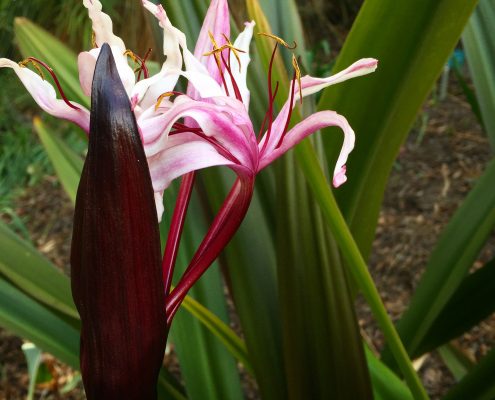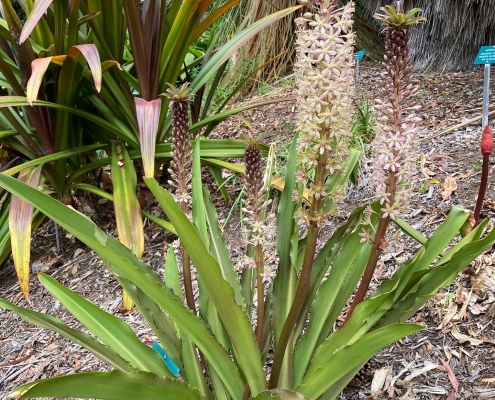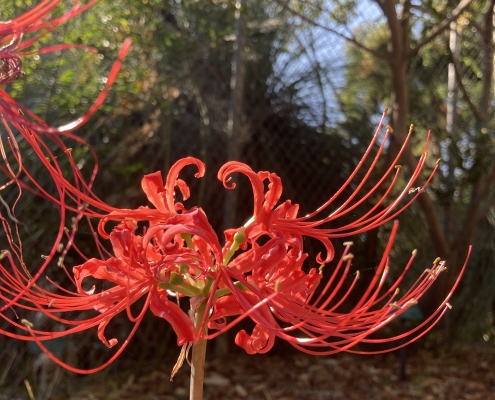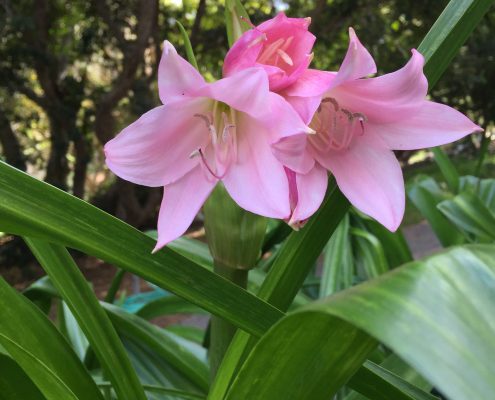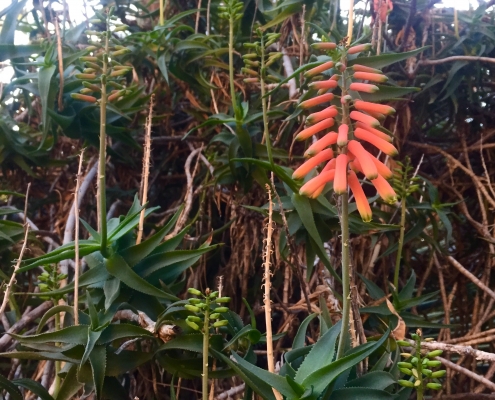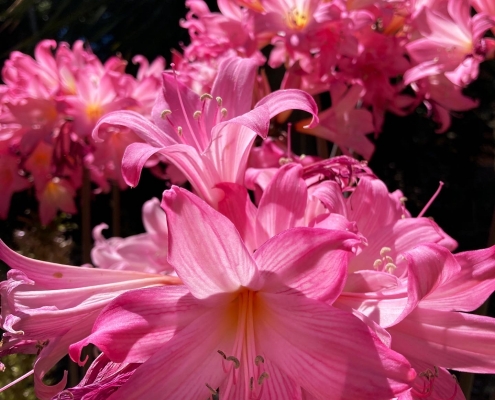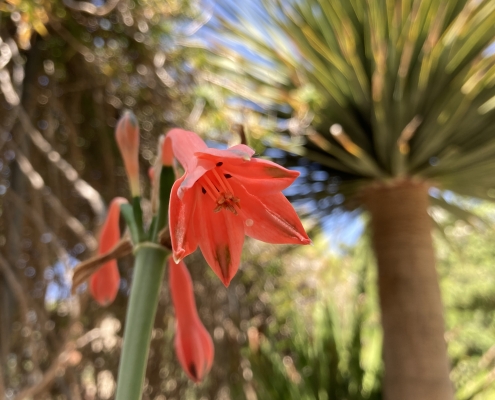![]()
Ornamental Monocots
Botanists often divide flowering plants into two categories: monocots and dicots. This collection celebrates the diversity of monocots. These plants have leaves with parallel veins and flower petals that grow in multiples of three.
All plants in this collection were once in the lily family. Now, new research has moved many into the asparagus family as well as others. Taxonomy, or the scientific classification of living things, helps scientists name plants. Names allow us to categorize plants based on their relationships to one another. These names may change as scientists find new ways to understand plant relationships, like DNA sequencing.
“Lirios”
Los nombres comunes son importantes en botánica y nos ayudan a categorizar las plantas de acuerdo a sus relaciones de parentesco. La taxonomía es la clasificación científica de los seres vivos, la cual cambia a medida que los científicos desarrollan nuevos métodos para comprender estas relaciones; por ejemplo, el análisis de ADN. Todas las plantas en esta colección pertenecieron alguna vez a la familia de los Lirios, pero nuevos estudios han resultado en la reclasificación de varias de ellas dentro de la familia de los espárragos. Observa las etiquetas para identificar la familia (Liliaceae, Asparagaceae, etc.) a la que pertenece cada planta. Utilizamos comillas alrededor de “Lirios” para hacer notar los cambios en la organización científica de estas plantas a lo largo del tiempo.
Explore Further
The word lily is a great example of the imprecision of everyday language in describing the complexity of the natural world. Its dictionary definition of “a bulbous plant with large trumpet-shaped, typically fragrant, flowers on a tall, slender stem” does not follow the strict rules that scientists use when categorizing and naming plants. To a scientist, lily refers to a specific genus (Lillium), a botanical family (Lilliaceae), and a botanical order (Lilliales). Even more confusing, many plants which were once considered to be part of the Lily order and fit the dictionary description, have recently been moved to the Asparagus order (Asparagales) due to new molecular data which changes the understanding of the evolutionary history of this group, and hence their taxonomic classification. Regardless of the confusing name issues, lilies and their relatives are some of the showiest and most sought after garden plants.
Our “Lilies” collection contains plants that can broadly be considered as “lilioid” in traditional concepts of the group. In scientific terms, the most accurate name for this collection would be the ‘Petaloid Monocots’. For obvious reasons, we feel that “Lillies” is a much nicer name, and fits within the common definition of Lily. The diversity in growth forms in this garden is stunning, from the large tree aloe to tiny flowering bulbs and everything in between. Highlights include the large-leaved dragon tree (Dracaena aletriformis) and a beautiful stand of naked ladies (Amaryllis belladonna).




